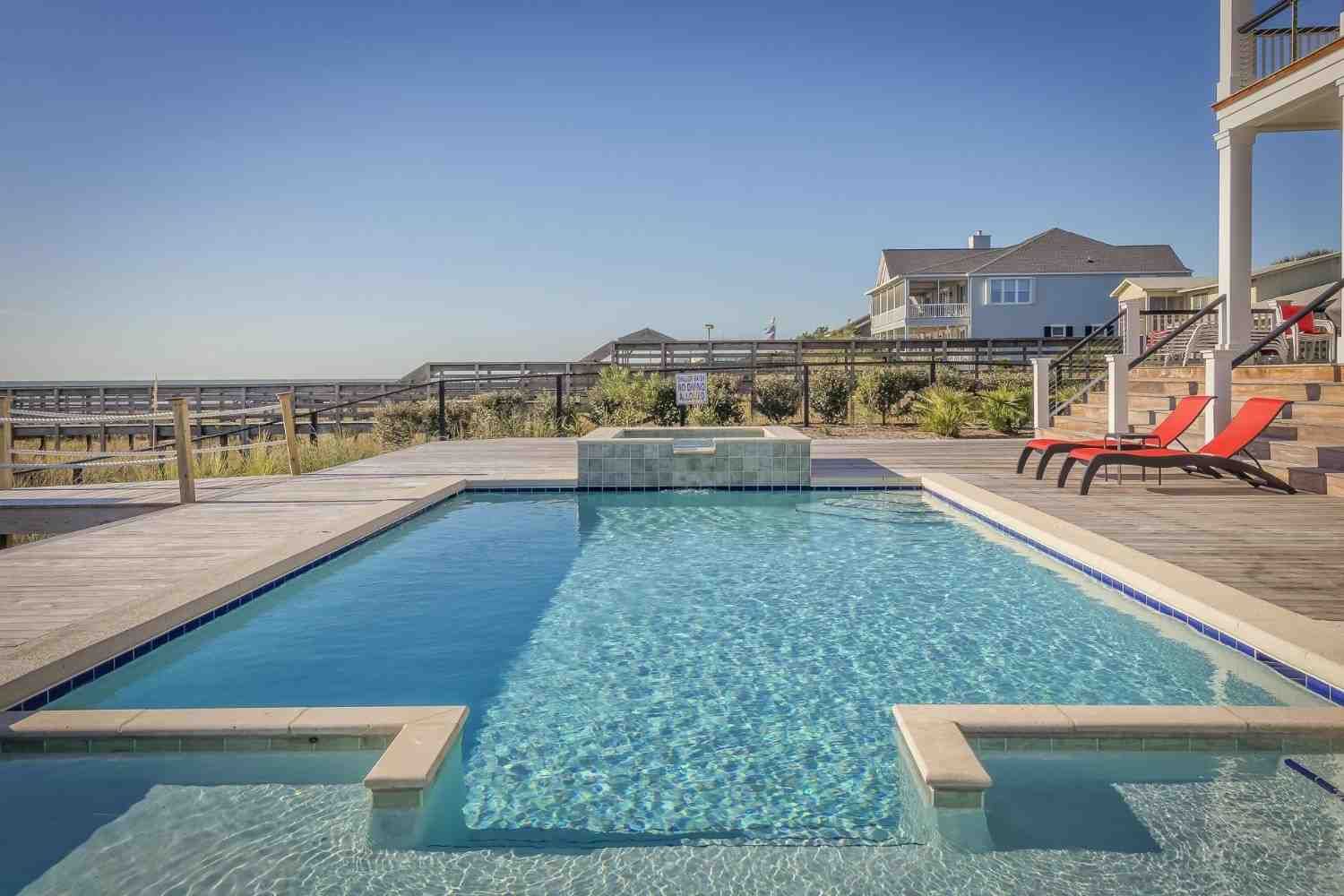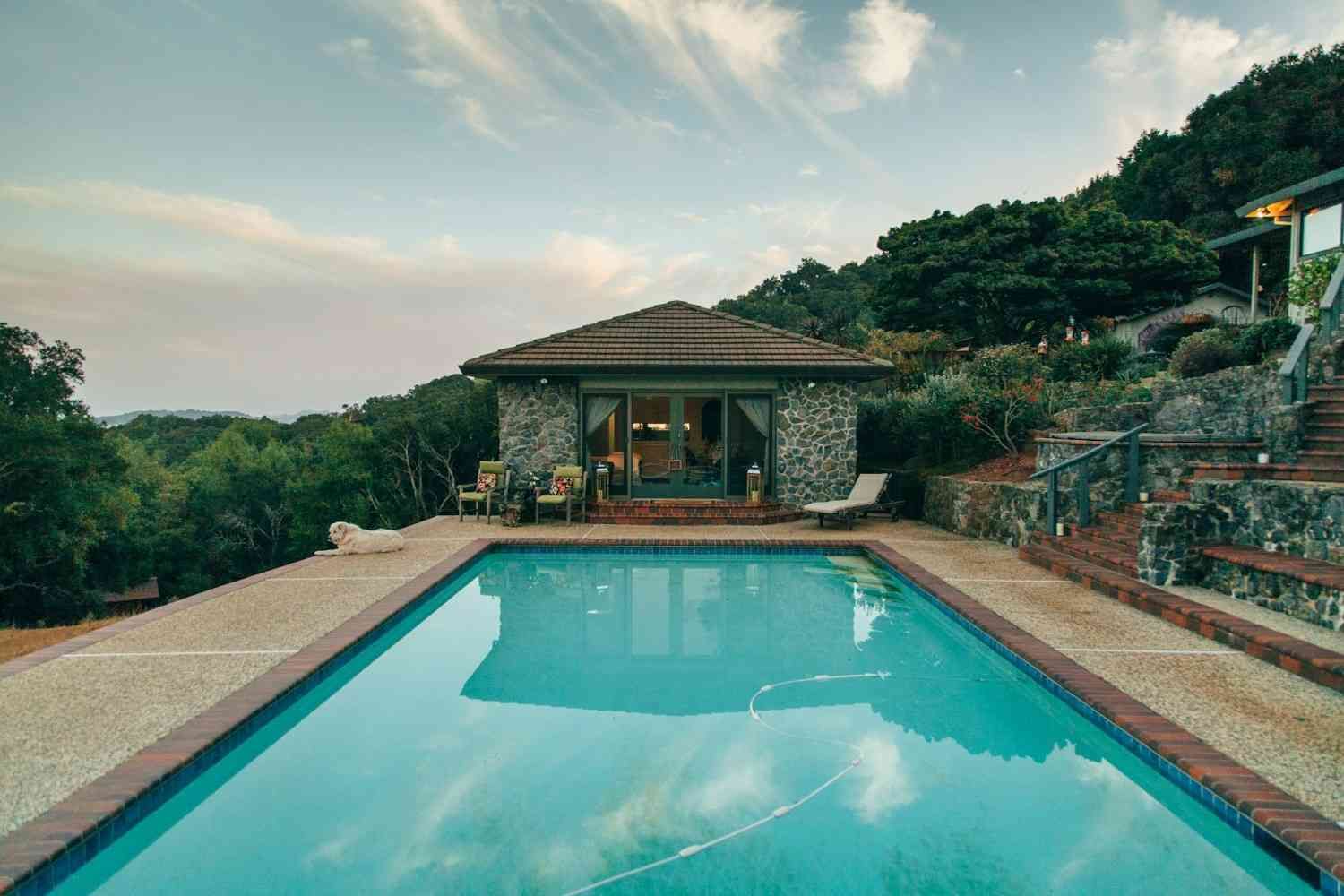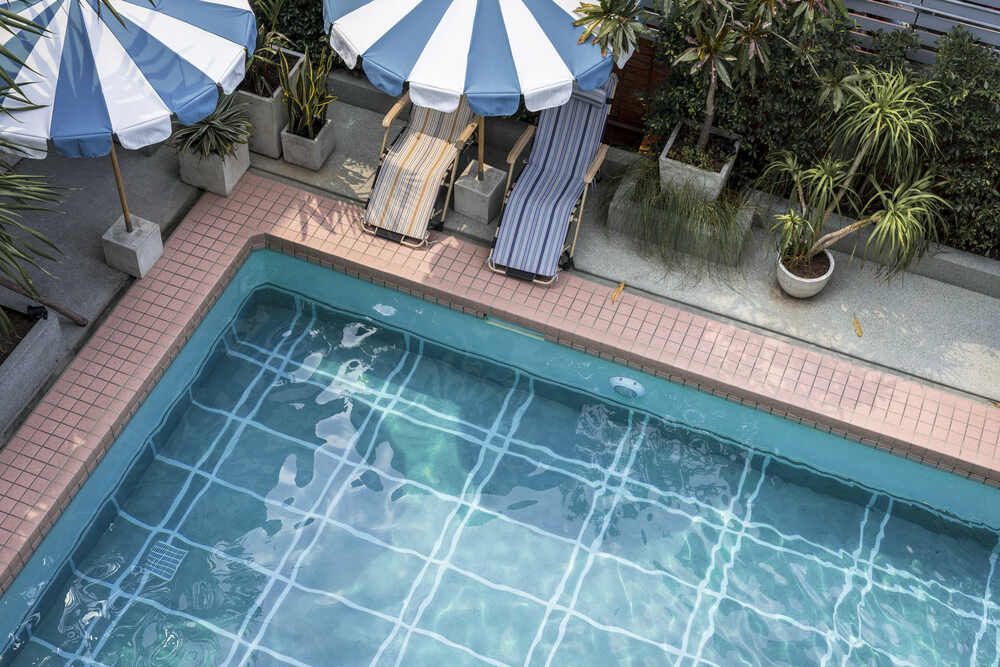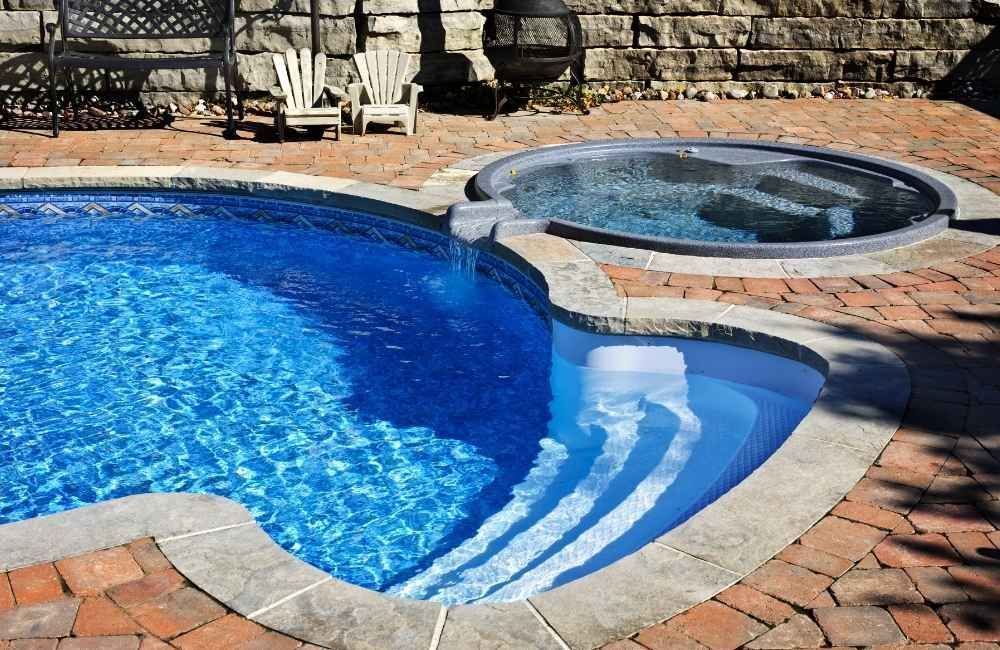Transform Your Yard Today! Affordable Pool Construction Solutions
Transforming an outdoor space into a personal oasis often starts with pool construction, an investment that can elevate both lifestyle and property value. While some may assume a stunning pool requires an extravagant budget, affordable pool construction offers creative solutions that deliver style, functionality, and relaxation without excessive costs.
Here are five affordable pool solutions to consider for enhancing outdoor spaces.
Table of Contents
- Key Takeaways
- 1. Choose a Smaller Pool Size
- 2. Use Cost-Effective Materials
- 3. Simplify the Pool Design
- 4. Opt for Energy-Efficient Systems
- 5. Take Advantage of Prefabricated Pool Kits
- How to Create a Budget for Pool Construction Costs
- How to Select the Best Location for Pool Construction
- How to Extend the Lifespan of a Pool
- Frequently Asked Questions (FAQs)
- Upgrade Your Outdoor Space with FJV Construction in Danbury, CT
Key Takeaways
✔
Smaller pools with geometric shapes and built-in features reduce costs while maximizing functionality.
✔ Using cost-effective materials like vinyl and fiberglass lowers installation and maintenance expenses.
✔ Simple pool designs with basic shapes and minimal features keep construction and upkeep costs down.
✔ Energy-efficient systems like variable-speed pumps and solar heaters reduce long-term operating costs.
✔ Prefabricated pool kits simplify installation and provide an affordable way to achieve a professional look.
✔ Placing the pool in a sunny, wind-protected location improves comfort and lowers heating costs.
✔ Regular maintenance, resurfacing, and prompt leak repair extend the lifespan of a pool and prevent costly damage.
1. Choose a Smaller Pool Size
A smaller pool can deliver big benefits without the high costs of larger installations, and a chart for various pool sizes can help make an informed decision. Affordable pool construction becomes more manageable when working with compact designs that reduce material and labor expenses. Smaller pools also require less maintenance, saving money over time while still creating a refreshing and stylish outdoor space.
How Experts Maximize Small Pool Designs
- Focus on Geometric Shapes: Rectangular or square pools use fewer materials and simplify construction, lowering overall costs. Clean lines and symmetrical shapes also create a modern and visually appealing look.
- Use Space-Saving Features: Built-in seating, shallow lounging areas, and corner steps maximize functionality without increasing pool size. These elements add comfort and convenience while maintaining a compact footprint.
- Add Multi-Use Design Elements: A smaller pool can double as a spa or relaxation area with the addition of hydrotherapy jets or heating systems. This approach enhances usability without the need for extra square footage, aligning with affordable pool solutions.
2. Use Cost-Effective Materials
The choice of materials has a significant impact on pool construction costs. Affordable pool construction becomes more achievable when using materials that balance durability with affordability. By working with cost-effective options, it’s possible to create a stylish and long-lasting pool without exceeding the budget.
How Experts Save on Pool Materials
- Opt for Vinyl Liners: Vinyl pools are one of the most affordable pool solutions, costing less than fiberglass or concrete options. Vinyl is easy to install and available in various patterns and textures, allowing for attractive pool design solutions at a lower price point.
- Choose Fiberglass Over Concrete: Fiberglass pools are pre-manufactured and installed in one piece, reducing labor and installation costs. They also require fewer chemicals and less maintenance over time, making them a cost-effective long-term investment.
- Use Aggregate or Plaster Finishes: Aggregate and plaster finishes provide a polished look without the high price of tile or natural stone. These materials create a smooth, attractive surface while keeping overall pool construction expenses manageable.

3. Simplify the Pool Design
A straightforward design reduces both construction time and material costs, making it easier to stay within budget. Affordable pool construction often starts with simplifying the pool’s shape, layout, and added features. Clean, simple designs also make maintenance easier and more affordable.
How Experts Streamline Pool Design
- Stick to Basic Shapes: Rectangular and oval pools require less material and labor than complex shapes. These classic designs also maximize swimming space and are easier to clean and maintain.
- Limit Built-In Features: While waterfalls, fountains, and complex lighting systems add appeal, they also drive up costs. Prioritizing essential features like stairs and ledges keeps the focus on functionality and affordability.
- Avoid Deep Pools: Shallow pools require less excavation and structural support, reducing overall costs. A depth of four to five feet is often sufficient for swimming and lounging, making it an affordable pool solution.
4. Opt for Energy-Efficient Systems
Installing energy-efficient systems during pool construction reduces long-term operational costs. Affordable pool construction isn’t just about installation costs—it’s also about making the pool cost-effective to maintain. Energy-efficient pumps, heaters, and filtration systems save money on utilities while improving pool performance.
How Experts Reduce Energy Costs
- Install a Variable-Speed Pump: Variable-speed pumps adjust flow rates based on pool size and usage, reducing energy consumption. They are more efficient than single-speed pumps and can cut energy costs by up to 70%.
- Use a Solar Pool Heater: Solar heating systems harness the sun’s energy to warm the pool without relying on electricity or gas. While the upfront cost may be higher, the long-term savings make it a valuable investment in affordable pool solutions.
- Choose LED Lighting: LED lights use a fraction of the energy of traditional incandescent bulbs and last significantly longer. They also come in various colors and intensities, allowing for creative pool design solutions without raising the energy bill.
5. Take Advantage of Prefabricated Pool Kits
Prefabricated pool kits simplify the pool construction process and reduce labor costs. These kits include pre-cut and pre-measured materials, making them a practical and affordable pool solution for quick installation. Prefabricated options provide a professional look at a fraction of the price of custom designs.
How Experts Maximize Prefabricated Kits
- Select a Fiberglass Pool Shell: Prefabricated fiberglass pool shells are molded off-site and delivered ready for installation. This reduces construction time and labor costs while ensuring a smooth, uniform finish.
- Use Modular Installation Techniques: Modular pool construction involves installing pre-made panels and components on-site. This approach speeds up the backyard pool installation process and reduces waste, saving both time and money.
- Include Basic Accessories: Prefabricated kits often come with built-in features like skimmers, drains, and lights. These included elements simplify the pool design process and help keep costs predictable and manageable.
How to Create a Budget for Pool Construction Costs
With the global swimming pool market projected to reach USD 12.3 billion by 2032, planning a pool construction project starts with a clear and realistic budget. Understanding the different cost factors involved helps prevent unexpected expenses and ensures the project stays on track. A well-organized budget allows for smarter decisions about materials, design, and labor while keeping costs under control
1. Research Average Costs in the Area
Construction costs can vary significantly depending on location, materials, and labor rates. Researching the average cost of pool construction in the local area provides a baseline for setting a realistic budget. This step helps identify any potential cost-saving opportunities and ensures the budget aligns with market rates.
2. Break Down Costs by Category
Dividing the budget into categories like excavation, materials, labor, permits, and finishing work creates a clear financial plan. This approach helps track spending and identify areas where costs can be adjusted without compromising quality. Having a detailed cost breakdown also makes it easier to compare quotes from contractors.
3. Account for Permits and Inspections
Many cities and towns require permits and inspections for pool construction, which can add unexpected costs. Researching permit requirements ahead of time prevents delays and ensures the budget reflects these expenses. Some municipalities also charge for follow-up inspections, so including these costs in the budget avoids surprises.
4. Include a Contingency Fund
Unexpected issues like weather delays, soil problems, or material shortages can increase costs. Setting aside 10% to 15% of the total budget as a contingency fund covers these unforeseen expenses. This financial buffer helps prevent the project from going over budget and ensures work continues without interruption.
5. Factor in Long-Term Maintenance Costs
Pool construction costs don’t end once the pool is built. Regular maintenance, water treatment, repairs, and seasonal care all contribute to long-term expenses. Including these costs in the initial budget helps create a realistic financial plan and prevents future strain on household finances.
6. Compare Multiple Contractor Quotes
Getting quotes from at least three different pool construction companies helps identify fair pricing and potential cost-saving opportunities. Detailed quotes should include labor, materials, permits, and any additional fees. Comparing options ensures the budget reflects competitive rates while avoiding hidden costs.
How to Select the Best Location for Pool Construction
Choosing the right location for pool construction plays a key role in the pool’s functionality, maintenance, and overall appearance. A well-positioned pool maximizes sunlight, reduces debris buildup, and enhances the overall flow of the yard. Careful planning during the early stages of backyard pool installation prevents costly mistakes and improves long-term satisfaction.
1. Maximize Sunlight Exposure
Positioning the pool in a spot that receives plenty of sunlight helps maintain warmer water temperatures and reduces heating costs. South-facing areas tend to get the most consistent sun exposure throughout the day. Avoid placing the pool in areas shaded by large trees or buildings, as this can make the water colder and increase heating expenses.
2. Consider Wind Direction and Exposure
Strong winds can cool pool water and increase evaporation, leading to higher heating and water costs. Placing the pool near a natural windbreak, such as a fence, hedge, or structure, helps reduce wind exposure. Installing wind barriers like glass panels or shrubs also improves comfort while swimming.
3. Ensure Easy Access from the House
A pool positioned close to the house improves convenience and safety. Direct access from a patio or deck makes it easier to monitor children and guests. It also creates a seamless flow between indoor and outdoor living spaces, making the pool more accessible for entertaining.
4. Avoid Overhead Obstructions
Placing the pool away from trees and power lines prevents falling leaves, debris, and safety hazards. Overhanging branches can clog filters and increase maintenance requirements. Keeping a clear overhead space also allows for future additions like shade structures or pool lighting.
5. Plan for Proper Drainage and Elevation
Choosing a level area with good drainage prevents water from pooling around the deck and causing damage. Sloped areas may require additional grading or retaining walls to prevent runoff from washing dirt and debris into the pool. Proper drainage design protects the pool structure and surrounding landscaping from erosion.
6. Consider Privacy and Noise Levels
Positioning the pool in a more secluded area of the yard enhances privacy and reduces noise from neighbors or nearby streets. Adding privacy features like fencing, hedges, or pergolas creates a more comfortable and peaceful swimming environment. Factoring in noise levels during pool construction improves relaxation and overall enjoyment.

How to Extend the Lifespan of a Pool
A well-maintained pool can provide years of enjoyment and increase property value. Proper care and smart upgrades help prevent damage, reduce maintenance costs, and extend the life of the pool. Taking proactive steps during and after pool construction ensures the pool remains in excellent condition for the long term.
1. Maintain Proper Chemical Balance
Keeping pool water properly balanced prevents corrosion, scaling, and algae growth. Regularly test the water’s pH, alkalinity, and chlorine levels to maintain ideal conditions. Unbalanced water can damage the pool’s lining, filter, and other components over time, leading to costly repairs.
2. Schedule Regular Equipment Maintenance
Pool pumps, heaters, and filtration systems need regular maintenance to function efficiently. Cleaning filters, inspecting pumps, and checking for leaks help prevent system failure. Replacing worn parts before they break down reduces the risk of costly damage and ensures consistent performance.
3. Use a High-Quality Pool Cover
Covering the pool when not in use prevents debris from entering the water and reduces evaporation. A high-quality cover also protects the pool surface from UV damage and temperature fluctuations. This simple step reduces cleaning time and extends the lifespan of the pool’s finish and equipment.
4. Resurface the Pool When Needed
Over time, pool surfaces can become rough, stained, or cracked. Resurfacing with plaster, aggregate, or vinyl restores the pool’s appearance and protects it from further damage. Addressing minor surface issues early prevents more extensive structural problems down the line.
5. Monitor and Repair Leaks Promptly
Even small leaks can lead to significant structural damage if left unaddressed. Inspect the pool regularly for signs of water loss, such as dropping water levels or wet spots around the deck. Promptly sealing leaks prevents water from eroding the pool’s foundation and damaging nearby landscaping.
6. Protect the Pool from Harsh Weather
Installing a windbreak or protective barrier shields the pool from strong winds and debris, reducing wear and tear. In colder climates, using a winter cover and properly closing the pool prevents damage from freezing temperatures. Protecting the pool from weather extremes helps maintain its structure and extends its lifespan.
Frequently Asked Questions (FAQs)
What are the best pool shapes for small yards?
For small yards, rectangular and oval pools are often the best choices because they maximize swimming space while using less ground area. Freeform pools can also work well in tight spaces by fitting into irregular layouts. Choosing the right pool design solutions ensures that even a compact yard transformation feels spacious and functional.
How long does pool construction typically take?
Pool construction time varies depending on the size, type, and complexity of the yard transformation. An in-ground fiberglass pool can take 2 to 4 weeks, while concrete pools may take 6 to 12 weeks. Planning ahead with an experienced contractor helps streamline the process and avoid delays in backyard pool installation.
What are some eco-friendly pool options?
Eco-friendly pool construction options include saltwater systems, solar heaters, and energy-efficient pumps. Natural filtration systems using plants and bio-filters reduce the need for chemicals. These affordable pool solutions lower operating costs while creating a more sustainable swimming environment.
Can pool construction be done in the winter?
Pool construction can be done in the winter in areas where the ground doesn’t freeze, but cold weather can complicate excavation and concrete curing. Fiberglass pools are often installed more easily in cooler weather since they require less on-site curing. Working with a pool construction expert ensures proper installation, regardless of the season.
What’s the difference between saltwater and chlorine pools?
Saltwater pools use a salt chlorine generator to create chlorine from salt, resulting in softer water that’s gentler on the skin and eyes. Chlorine pools require direct chemical additions but provide more control over sanitization levels. Both pool design solutions for yard transformation have different maintenance requirements, so choosing the right one depends on budget and personal preference.
Upgrade Your Outdoor Space with FJV Construction in Danbury, CT
FJV Construction in Danbury, CT, specializes in expert pool construction and outdoor transformations designed to elevate any property. Whether it’s a sleek fiberglass pool or a custom concrete design, FJV Construction delivers high-quality, affordable pool solutions tailored to meet any vision and budget. Backed by experienced professionals and top-notch materials, FJV Construction ensures every pool installation is smooth, efficient, and built to last.
Contact FJV Construction today to turn your backyard into the ultimate relaxation and entertainment space!
Our Info
Monday to Friday from 7 am to 6 pm
Saturdays from 8 am to 5 pm
We Accept Cash and Checks
LOCATION
We Cover 80 Miles around Bethel,
Danbury, and Brookfield
Bethel, Connecticut 06801
Danbury, Connecticut 06810
Brookfield, Connecticut 06804
Navigation
Copyright FJV Construction, All Rights Reserved



